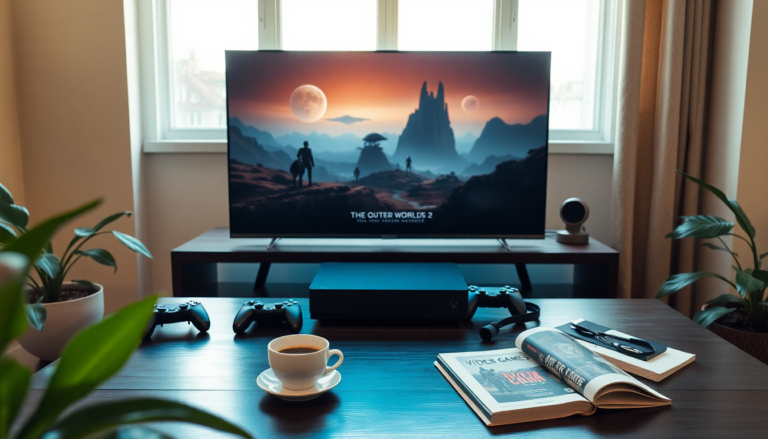Argomenti trattati
The recent announcement of an $80 price tag for The Outer Worlds 2 has stirred quite a bit of conversation within the gaming community. As players express their frustration over rising costs, it’s essential to understand how these pricing decisions are made and who is truly responsible for them. This article aims to clarify the situation surrounding the price of this eagerly awaited game from Obsidian Entertainment.
The rising cost of video games
In recent years, the standard price for new video games in the United States has increasingly settled around the $80 mark. This shift has been met with considerable pushback from gamers, who often voice their displeasure whenever a new title is priced at this level. The Outer Worlds 2, set for release on October 29 for PC, Xbox Series X and S, and PlayStation 5, is the latest title to join this contentious pricing trend.
Brandon Adler, the game director at Obsidian Entertainment, recently addressed these concerns, emphasizing that the pricing decisions are not made by the developers themselves. Instead, he pointed the finger at the publisher, which in this case is Microsoft. Adler explained that game studios focus on development and creativity, leaving pricing strategies to the publishers. This distinction is crucial for understanding the broader context of the pricing debate.
What does Microsoft have to say?
Following the announcement regarding The Outer Worlds 2, Microsoft confirmed that it would be raising prices for some of its first-party titles. This decision was not made lightly and is being evaluated on a case-by-case basis. As outlined by Adler during an interview with GamesRadar+, the implications of such price hikes are significant for both developers and consumers alike.
While some may think that developers have a say in the pricing of their games, Adler clarified, “We are developers. We love making games. It’s not us who decide the prices of our titles.” This statement reflects a common sentiment among game developers who often feel caught between their creative aspirations and the commercial realities imposed by large publishers.
Looking ahead: The industry response
The $80 price tag for The Outer Worlds 2 represents a growing trend within the industry, where higher production values and development costs are often passed on to consumers. For instance, shortly after the pricing announcement for The Outer Worlds 2, Nintendo also revealed an $80 price for Mario Kart World on the upcoming Nintendo Switch 2. This indicates a shift in the pricing landscape across major gaming platforms.
Despite the backlash, it’s worth noting that many developers, like Adler, would prefer their games to be accessible to as many players as possible. “Personally, as a developer, I’d like everyone to play my games because that’s why I do this job,” he remarked. However, the pricing decision ultimately falls on the publisher, which complicates matters. The growing emergence of $80 games is expected to continue, putting pressure on players to adapt to this new norm.
Consumer reactions and future implications
As the gaming community grapples with the implications of these rising prices, it raises questions about the sustainability of the current model. Many players worry that the increase in prices will limit their access to new games, potentially alienating segments of the audience. High prices can also lead to discussions about value — what players expect in return for their investment.
Moreover, public figures within the industry, such as Randy Pitchford, have also commented on the trend, suggesting that other franchises like Borderlands could follow suit. These statements reinforce the notion that the $80 price point is becoming more normalized, and players may need to prepare for an era where premium pricing is the standard.
In summary, the pricing of The Outer Worlds 2 serves as a microcosm of broader trends affecting the gaming industry. While developers like Obsidian Entertainment focus on creating engaging experiences, they must navigate the complex pricing strategies imposed by publishers. As the conversation around game pricing evolves, it will be essential for the gaming community to engage in discussions about value, accessibility, and the future of the industry.

